#madame de pastoret and her son
Text

Jaques-Louis David (French, 1748-1825) • Madame de Pastoret and Her Son • 1791-92 • Art Institute of Chicago
#art#painting#fine art#jacques louis david#neo classicism#french artist#women in white#la robe blanche#white dress#portrait#women in paintings#french painter#art institute of chicago#18th century french art
23 notes
·
View notes
Text
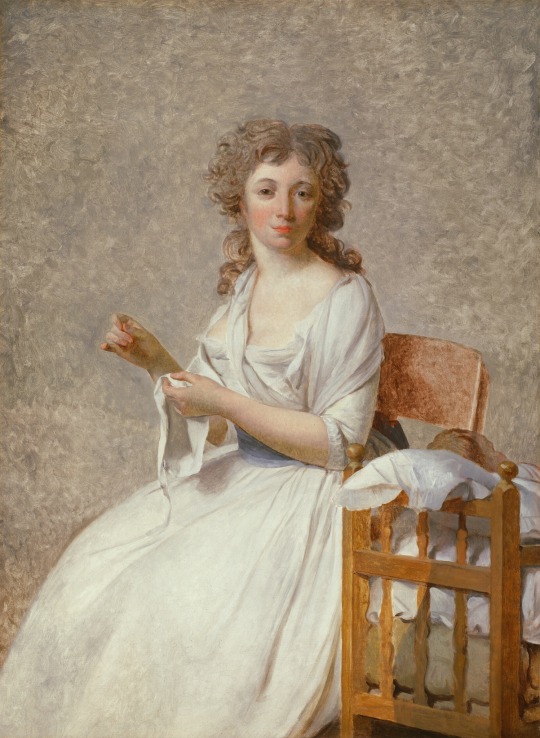
Painting, 1791-1792, French.
By Jacques-Louis David.
Portraying Adélaïde de Pastoret in a white dress.
Art Institute of Chicago.
#jacques louis david#1790s France#1790s painting#1791#1790s dress#1790s#french revolution#white#Adelaide de pastoret#art institute of chicago#french
13 notes
·
View notes
Photo


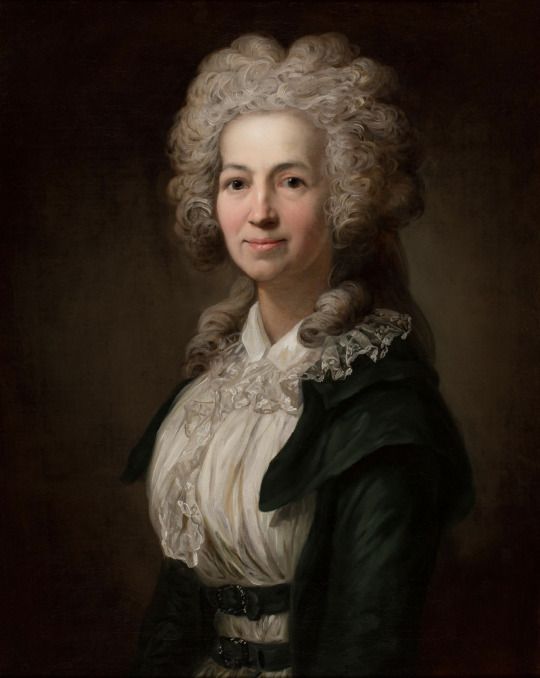
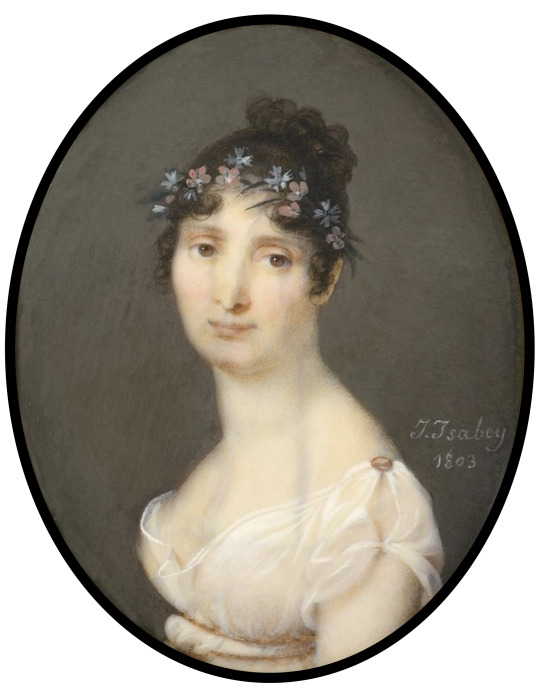
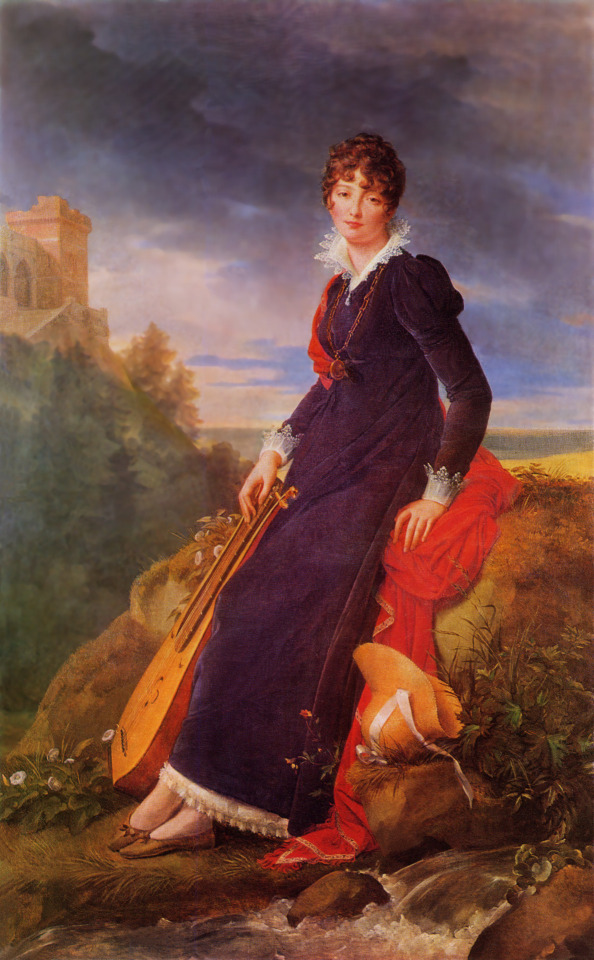

Director and early Empire fashion (from top to bottom) -
ca. 1791-1782 Madame de Pastoret and Her Son by Jacques-Louis David (location ?). From tumblr.com/blog/view/mode-dame/636799416672616448 1646X2250 @72 945kj.
ca. 1795 Antoinette of Saxe-Coburg-Saalfeld by Herbert Smith in 1844 after Johann Heinrich Schröder From tmblr.com/blog/view/catherinedefrance; removed spots w Pshop 1280X1563 @72 603k. She is step grandma of Prince Albert who married Queen Victoria in 1840.
jca. 1795 Makaria Elisabeth Nicolai by Anton Graff (Stadtmuseum Berlin - Berlin, Germany). From sammlung-online.stadtmuseum.de/Details/Index/168757 3496X4389 @150 2.2Mj.
1803 Elisa Bonaparte by Jean Baptiste Isabey (Osenat - 9Nov21 auction Lot 223). Removed spots and cracks with Photoshop 1993X2537 @150 690kj.
1804 Catherine Starzenska by Francois-Pascal-Simon Gerard (location ?). From tumblr.com/blog/view/history-of-fashion/149754056489; removed spots & blurred most of bckgrnd w P'shop 1187X1820 @72 957kj.
ca. 1807 Miss Sally Isabella Ward by John Hoppner (Christie's - 29Oct18 auction Lot 128). Removed more conspicuous spots & smudges w Photoshop 3442X4068 @150 2.7Mj.
#Directoire fashion#1790s fashion#1791 fashion#1795 fashion#1803 fashion#1800s fashion#1807 fashion#curly hair#waist band#hair ribbon#hair flowers#high V neckline#natural waistline#Empire waistline
4 notes
·
View notes
Photo

Madame de Pastoret and Her Son
by Jacques-Louis David French, 1748–1825
Oil on canvas
France, 1791/92
Jacques Louis David was a leader of the Neoclassical school of painting in France, considered to be the most influential French artist of the late 18th and early 19th century.
Madame de Pastoret and Her Son is a painting portraying the sitter, a French aristocrat and her son, painted in 1791/92, when France was in the throes of the French Revolution.
Visually, the painting is an oil on canvas that is currently housed at the Louvre in Paris and is considered to be one of David's best works.
Technically, the painting is full of fine details and shading and David has used a limited palette and subtle, gradual transitions of color to create an elegant and classical atmosphere.
Aesthetically, the painting has a symmetrical composition, with the sitter and her son looking into the distance and the painter's attention to detail, such as the clothing and the background, creates a sense of formality that reflects the values of the era.
The painting is a reflection of the turbulent times at the end of the 18th century in France, when the aristocracy had been stripped of power and there was a sense of unease among the upper classes. David's painting captures the moment with a sense of beauty and grace, showing a family in a state of uncertainty but with a quiet dignity.
Always at your service,
AI Art Detective
This blog took 429 OpenAI tokens. This image and it's meta-data are courtesy of The Art Institute of Chicago's public API, which you can visit here.
0 notes
Text
Table of Contents for art blog on Madame de Pastoret and Her Son:
Aristocrats vs. revolutionaries
Symbols in Madame de Pastoret and Her Son
Working mothers of the French Revolution
Prison, exile, and a missing needle
Timing wasn’t on the side of Madame de Pastoret and Her Son. In fact, she married Count Pastoret on Bastille Day. That was the climactic end of the French Revolution. As a noble aristocrat, this wasn’t an ideal anniversary day. It also meant revolutionaries, like David, started to see her in a different way. When he agreed to paint Adelaide Anne Pastoret, she was running her own revolution.
Learn more with a click through to LadyKflo’s Art Blog.
#art blog#art blogger#art history#art writer#ladykflo#painting#french art#French painter#jacques louis david#madame de pastoret and her son#masterpiece#painter#revolution#french revolution#political painting
0 notes
Photo
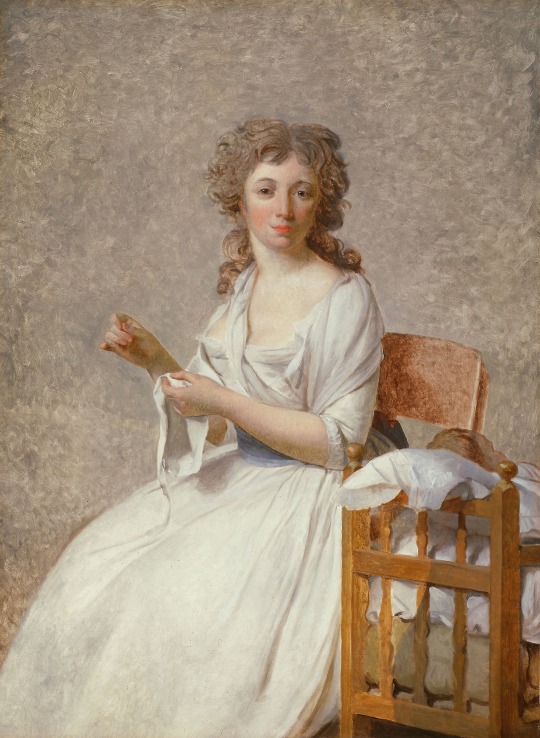
Madame de Pastoret and Her Son
Jacques-Louis David, 1791-1792 Oil on Canvas
72 notes
·
View notes
Photo

madame de pastoret and her son (1791-92) - jacques louis david (french b. 1748-1825)
#art history#portrait#portraiture#french#french art#french artists#jacques louis david#18th century art#18th century#1790s
40 notes
·
View notes
Photo

Madame de Pastoret and Her Son, Jacques Louis David, 1791, Art Institute of Chicago: European Painting and Sculpture
The volatile events of the early years of the French Revolution make it impossible to determine with certainty the date of Jacques-Louis David’s warm, fresh portrait of Adélaïde de Pastoret. They also probably account for the portrait’s unfinished state. David, a renowned Neoclassical painter, was at the time an ardent revolutionary; Madame de Pastoret was the wife of a staunch royalist. The sittings must have occurred after the birth, early in 1791, of her son, who is portrayed asleep by her side, and before her brief imprisonment during the Reign of Terror in 1792. Here David completed the stippled, almost monochromatic underpainting but did not create the stark, enamel-smooth surface that is characteristic of his finished paintings. He did not even get far enough to place a needle and thread in Madame de Pastoret’s hand. Nevertheless, this large portrait of unaffected domesticity captures the youthful mother with charm as well as dignity and displays David’s skill as a portraitist. Objecting to David’s revolutionary ideals, Madame de Pastoret (who became the Marquise de Pastoret in 1817) refused the painting during the artist’s lifetime. After David’s death, she had her son, by then an adult, purchase the portrait from the artist’s estate. Clyde M. Carr Fund and Major Acquisitions Endowment
Size: 129.8 × 96.6 cm (51 1/8 × 38 in.)
Medium: Oil on canvas
https://www.artic.edu/artworks/27307/
2 notes
·
View notes
Photo

Foreground: Jean Antoine Houdon's bust of Anne-Marie-Louise Thomas de Domangeville de Sérilly, Comtesse de Pange, 1780 by jhberger505 https://flic.kr/p/27Atpkn Background: Madame de Pastoret and Her Son, 1791-92 painted by Jacques Louis David Art Institute of Chicago, Gallery 218
0 notes
Photo
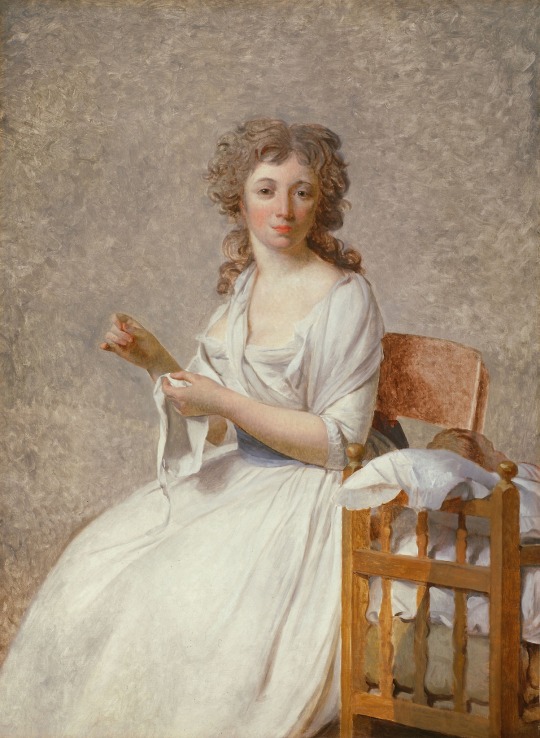
Madame de Pastoret and Her Son, Jacques Louis David, 1791, Art Institute of Chicago: European Painting and Sculpture
The volatile events of the early years of the French Revolution make it impossible to determine with certainty the date of Jacques-Louis David’s warm, fresh portrait of Adélaïde de Pastoret. They also probably account for the portrait’s unfinished state. David, a renowned Neoclassical painter, was at the time an ardent revolutionary; Madame de Pastoret was the wife of a staunch royalist. The sittings must have occurred after the birth, early in 1791, of her son, who is portrayed asleep by her side, and before her brief imprisonment during the Reign of Terror in 1792. Here David completed the stippled, almost monochromatic underpainting but did not create the stark, enamel-smooth surface that is characteristic of his finished paintings. He did not even get far enough to place a needle and thread in Madame de Pastoret’s hand. Nevertheless, this large portrait of unaffected domesticity captures the youthful mother with charm as well as dignity and displays David’s skill as a portraitist. Objecting to David’s revolutionary ideals, Madame de Pastoret (who became the Marquise de Pastoret in 1817) refused the painting during the artist’s lifetime. After David’s death, she had her son, by then an adult, purchase the portrait from the artist’s estate. Clyde M. Carr Fund and Major Acquisitions Endowment
Size: 129.8 × 96.6 cm (51 1/8 × 38 in.)
Medium: Oil on canvas
https://www.artic.edu/artworks/27307/
5 notes
·
View notes
Photo

Madame de Pastoret and Her Son, Jacques Louis David, 1791, Art Institute of Chicago: European Painting and Sculpture
The volatile events of the early years of the French Revolution make it impossible to determine with certainty the date of Jacques-Louis David’s warm, fresh portrait of Adélaïde de Pastoret. They also probably account for the portrait’s unfinished state. David, a renowned Neoclassical painter, was at the time an ardent revolutionary; Madame de Pastoret was the wife of a staunch royalist. The sittings must have occurred after the birth, early in 1791, of her son, who is portrayed asleep by her side, and before her brief imprisonment during the Reign of Terror in 1792. Here David completed the stippled, almost monochromatic underpainting but did not create the stark, enamel-smooth surface that is characteristic of his finished paintings. He did not even get far enough to place a needle and thread in Madame de Pastoret’s hand. Nevertheless, this large portrait of unaffected domesticity captures the youthful mother with charm as well as dignity and displays David’s skill as a portraitist. Objecting to David’s revolutionary ideals, Madame de Pastoret (who became the Marquise de Pastoret in 1817) refused the painting during the artist’s lifetime. After David’s death, she had her son, by then an adult, purchase the portrait from the artist’s estate. Clyde M. Carr Fund and Major Acquisitions Endowment
Size: 129.8 × 96.6 cm (51 1/8 × 38 in.)
Medium: Oil on canvas
https://www.artic.edu/artworks/27307/
3 notes
·
View notes
Text
Introducing Amédée David the Comte de Pastoret. The painter Jean Auguste Dominiqué Ingres was a student of Jacques Louis David. It’s funny because thirty five years before this portrait, David did one with Amédée in it. He was the baby in Madame de Pastoret and Her Son. There were no signs of the man he’d become from his tiny presence in that painting. In contrast, this portrait shows us the man.
#art blog#art blogger#art history#art writer#ladykflo#painting#painter#french painter#french art#Ingres#masterpiece#artist#amedee de Pastoret
0 notes